

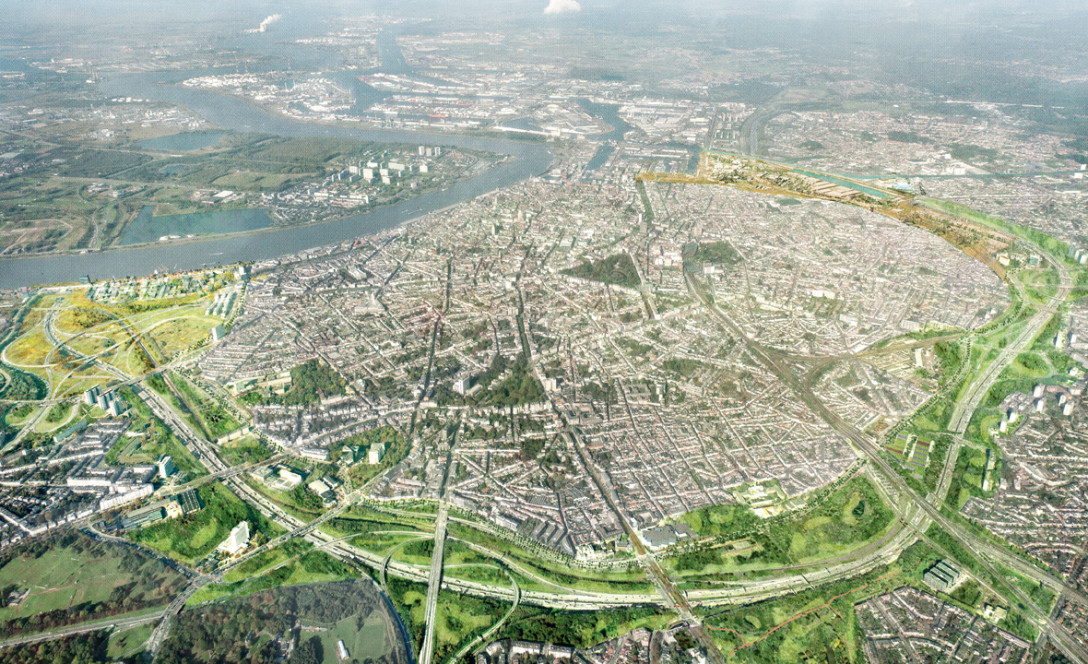
The Groene Singel is a spatially and ecologically fragmented infrastructural corridor surrounding Antwerp. It is a 625-hectare, strategically located ‘green gap’ between the inner and outer city that can play a key role as a catalyst in furthering the urban development of the city. In 2011, together with Maxwan, Antea Group, HUB, and Goudappel Coffeng, Karres en Brands won the tender for the design of the visual quality plan of the Groene Singel. The Groene Singel Visual Quality Plan unifies the fragmented space and increases its attractiveness and accessibility for people, flora, and fauna alike. It contains green, ecological, and smart, affordable guidelines for landscape, public space, ecology, infrastructure, and buildings.
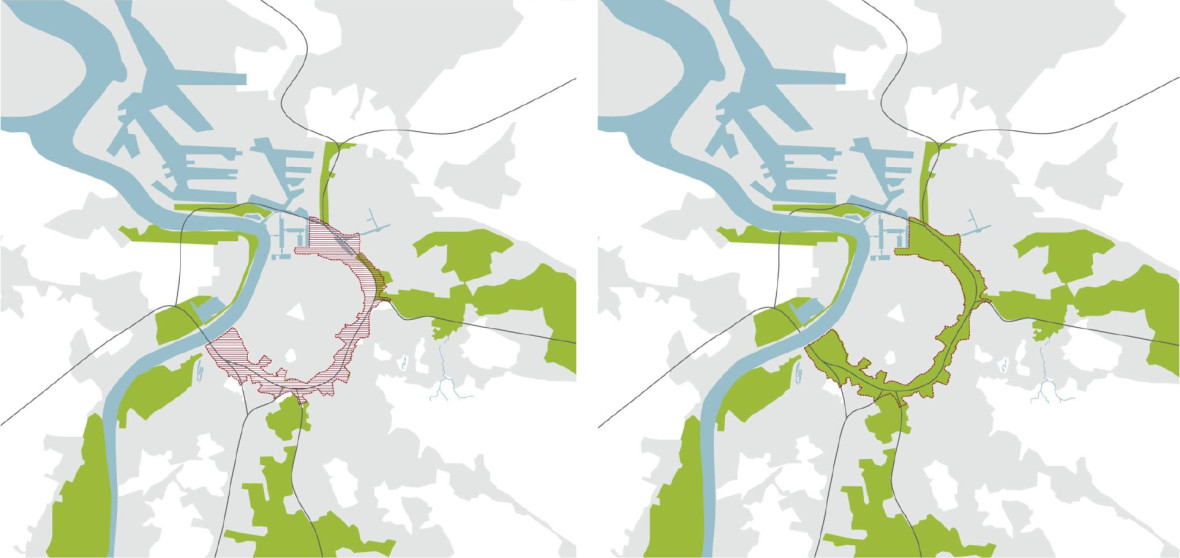
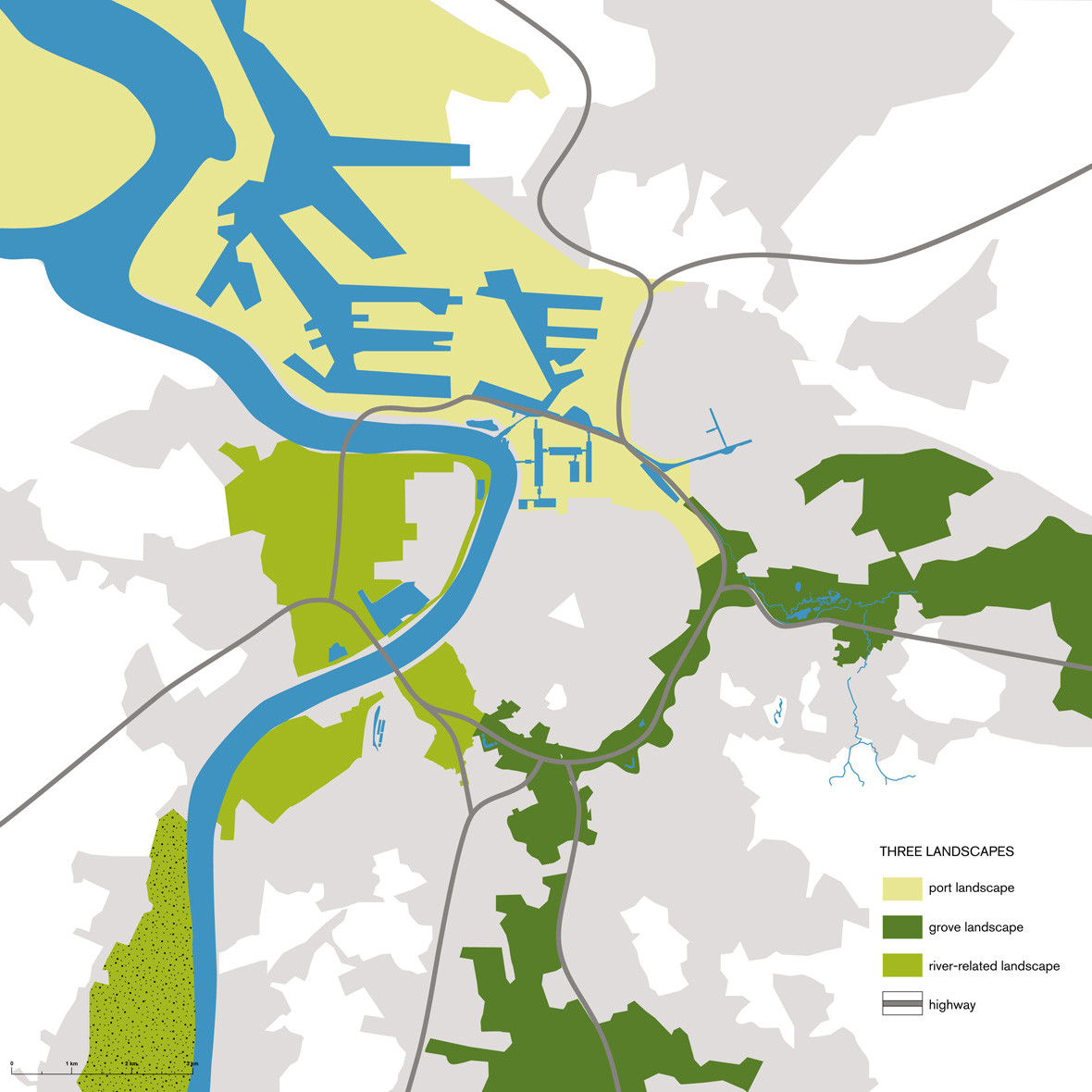
The Groene Singel is currently considered by Antwerp’s populace as a not particularly well-liked place to be, and yet, partly as a result, it is indeed a habitat for a wealth of flora and fauna. The margins of the Groene Singel are bountifully large, and are situated a stone’s throw from the adjacent districts, which have a shortage of parks and recreational areas, schools, and cultural and sports facilities. Through careful management and connection-oriented interventions, the future of the Groene Singel is expanded into a more powerful ecological system.
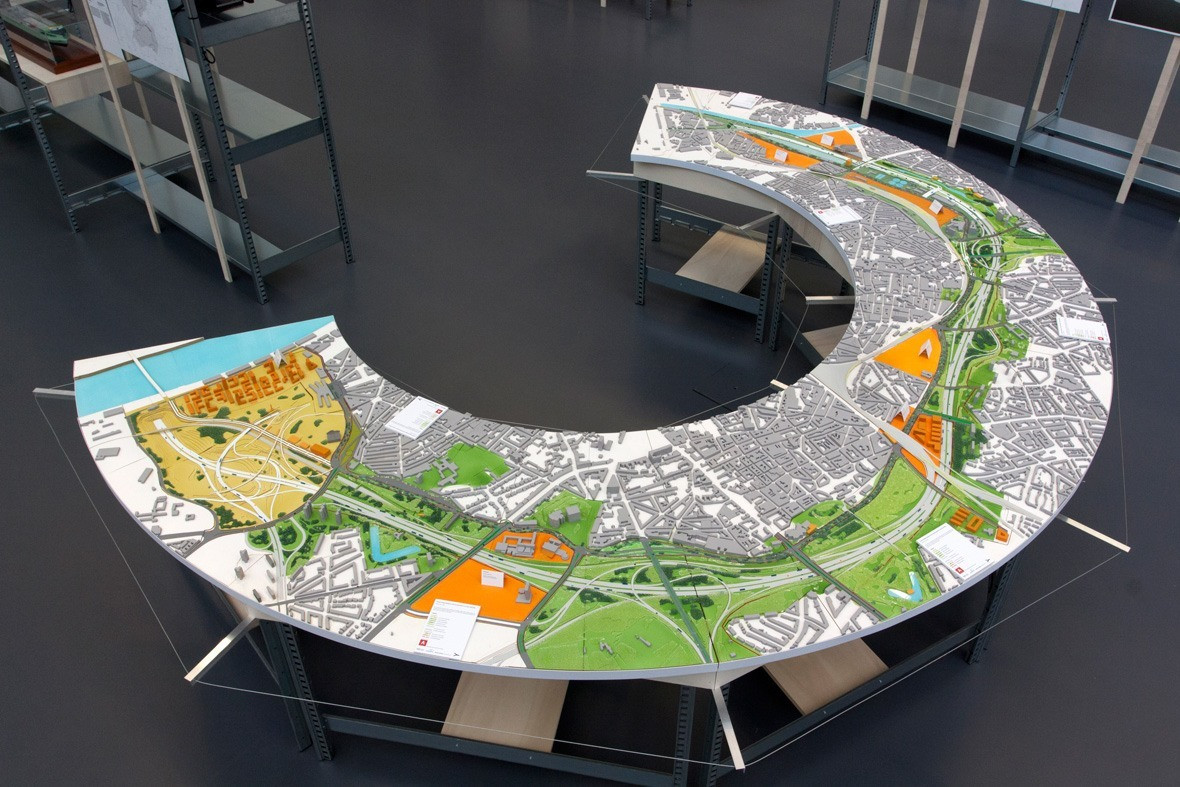
Spending time in the Groene Singel is made more attractive through a better organisation of the landscape of its margins, as well as the infrastructure that cuts through it. In three sections, existing landscapes have a differentiated development. In the northern part, the Haven Landscape; in the southern part, the Rivierduinen Landscape. Between them lies the grove landscape. The green quality is greatly improved: the ecological value increases, while the berms and planted vegetation form strong units and have a higher visual quality. The overall ecological structure is enhanced by improved connections with adjacent parks and landscape sections: image, management, and ecology go hand in hand.


Nestled against the background of the constants of landscape and infrastructure in the Groene Singel are unique buildings and outdoor spaces. The Keien (large development locations) and the Bermgebouwen (smaller public buildings) are distinguishing aspects surrounded by the Groene Singel and the edges of the inner and outer city. Noise-reduction measures improve the quality of life in neighbouring districts, whereby the Groene Singel becomes a more pleasant area to spend time and relax.
In the meantime, the competition plan has developed into a full-fledged Image Quality Plan, one that forms not only the basis for managing green areas, but also for future developments in the Groene Singel.
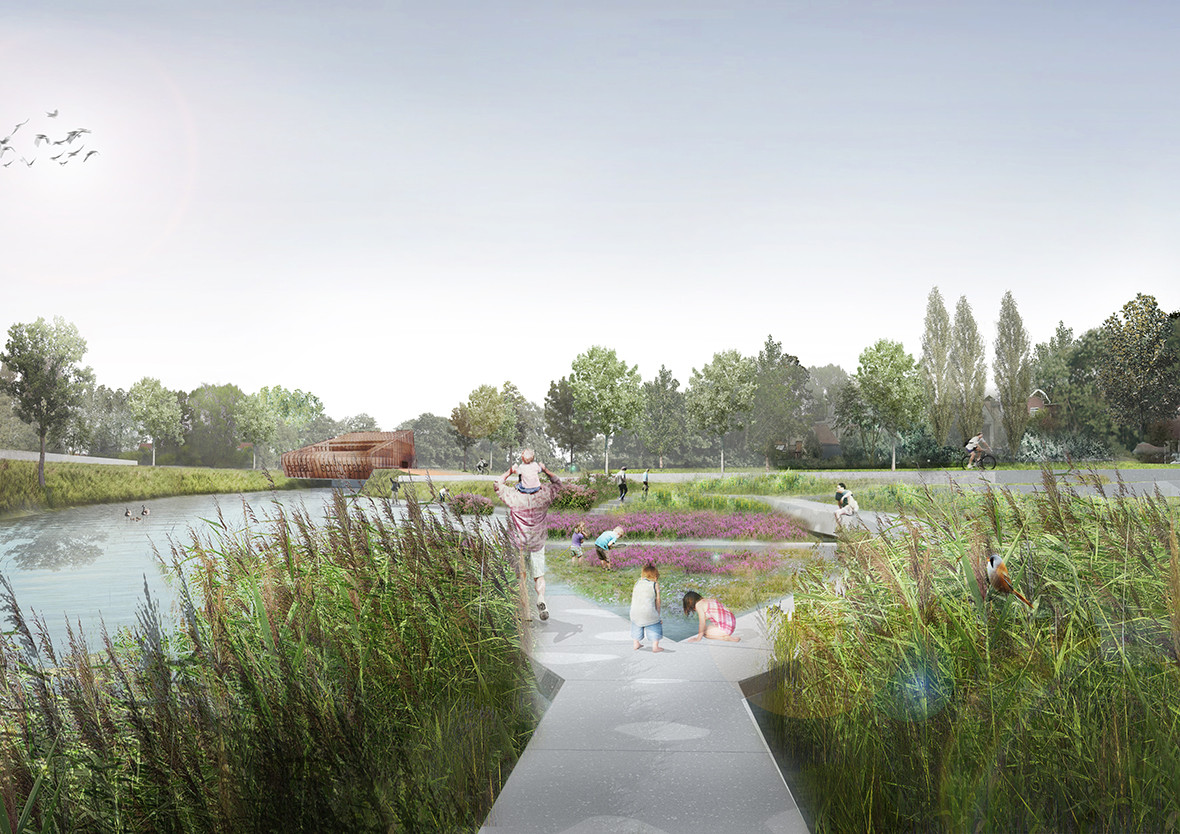
Since 2012, several studies have been carried out to elaborate, advise and partially design areas such as Lobroekdok and Singel Noord. In addition, landscape designs have been created for Park Schijn and Zandvang Schijnloop as well as designs for Turnhoutsepoort and Cultuur Park. There is also a new masterplan for Antwerp Expo, Luitenant Naeyaertplein and a landscape design for the South Junction. These key projects have indicated the direction the city wishes to take with the Groene Singel. The various tasks include establishing green, eco-friendly guidelines—which are also smart and affordable—for landscape, public space, ecology, and the integration of infrastructure and buildings. Several public and private projects have recently entered the implementation phase. For example, the Park Schijn construction is well under way and the first contours of the sand trap are now visible. The sand trap is part of Deurne Noord’s neighbourhood park, which includes specific areas for landscape development and an extensive programme. The design is based on a simple implementation of park and landscape—with the exception of the sand trap, which makes use of a particular feature in the Groot Schijn river to create a unique space. The sand trap is ecologically designed and embedded into the Singel’s green landscape. Through textures, flowers and colour, the selected plants offer an attractive look all year round.
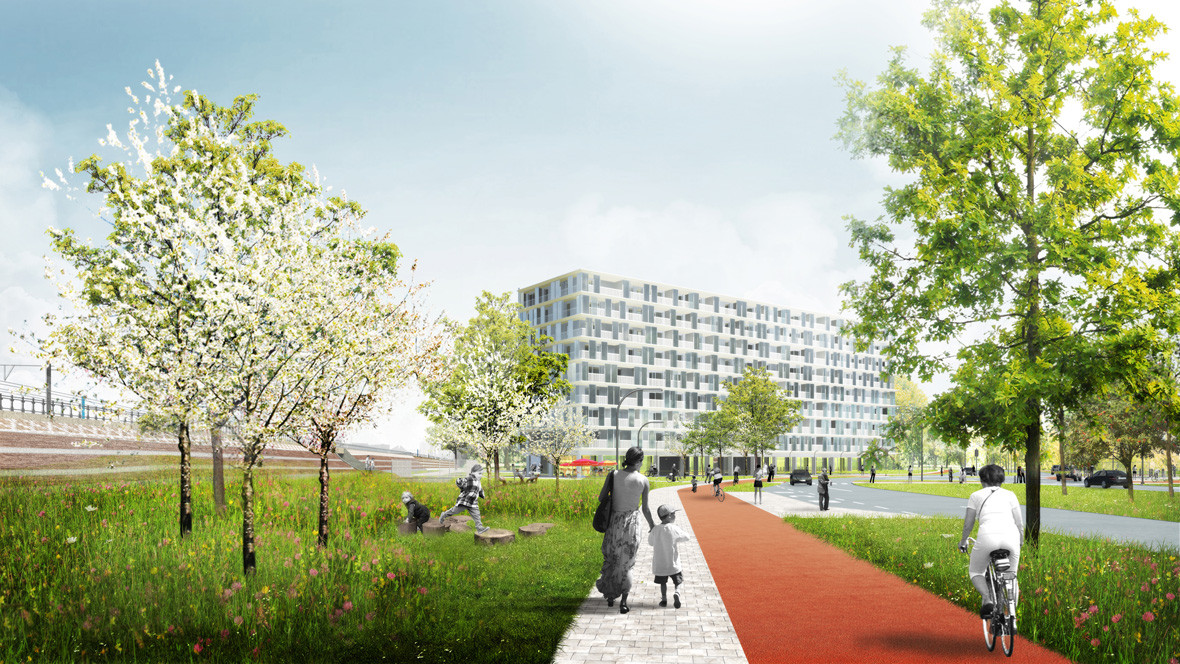
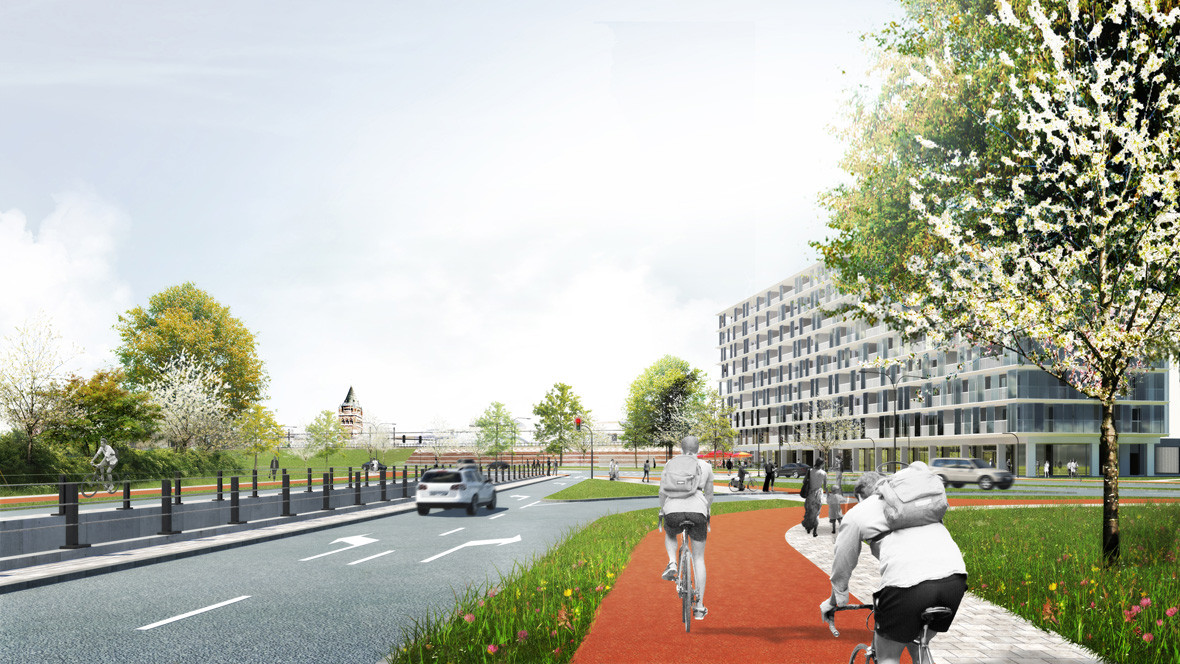
The Turnhoutsepoort construction and the integration of Park Oost are also in full swing. In both cases, the new Singel design and new building will be carried out by the CrepainBinst architecture firm. The preliminary landscape design is based on a thicket landscape, which aims to maximize conservation of the valuable ecological zones already on site. Near Rivierenhof, the roadside landscape will consist primarily of dense forest; whereas the city side will feature an open landscape with solitary trees. Additional emphasis is placed on the park’s function as a link from the city to the Rivierenhof. The biking and walking route between the city and Rivierenhof will be accentuated by the high ornamental blossoms of wild cherry trees. This redesign not only improves the public space of the Turnhoutsebaanpoort and the Statieleipoort, but also creates a high-quality entrance to the city. As a result, the Statieleipoort becomes an important location in the biking network, connecting the inner and out city networks.
The area analysis establishes how the South Junction landscape can function as a hinge point where all developments come together and connect. Not only in terms of mobility, but also from a spatial, ecological and landscape perspective, the goal is to situate the various developments in a larger framework that can be adapted as necessary. Bridges and viaducts branching off the reconstruction serve as crossings for bicycles, pedestrians and wildlife, thus increasing the South Junction’s recreational and ecological connectivity. On the urban side, the New South’s Wadi Park will be connected to Konijnenwei via an iconic park bridge, creating a new continuous park area that can relieve the recreational pressure built up in the city centre. In addition to event and park space, South Junction will also provide a buffer for water collection, particulate matter and noise from the city centre and motorway.
| Location. | Antwerp, Belgium |
|---|---|
| Assignment | Design visual quality plan for ring around inner city and realization projects subareas |
| Size | 625 hectare |
| Design | 2011 - 2017 |
| Status | In implementation since 2013 |
| Client | AG VESPA Antwerpen |
| In collaboration with | Maxwan, Antea Group, HUB en Goudappel Coffeng |